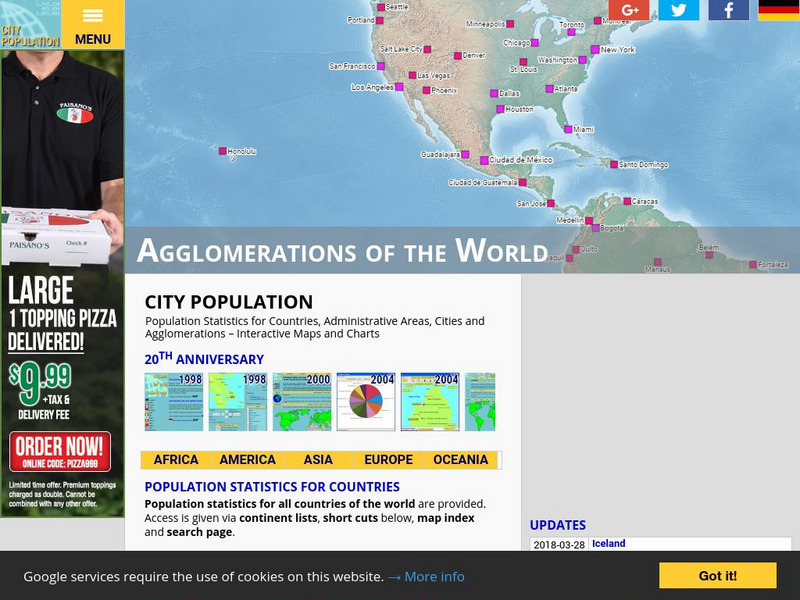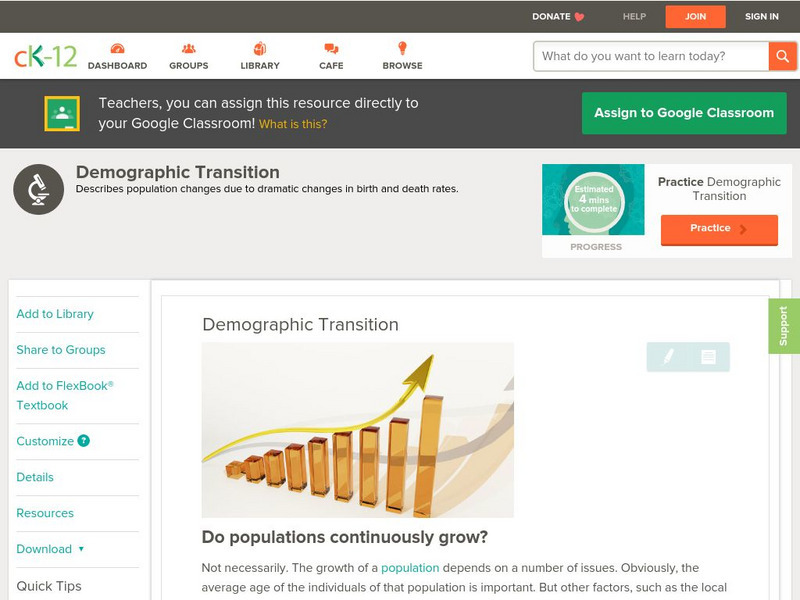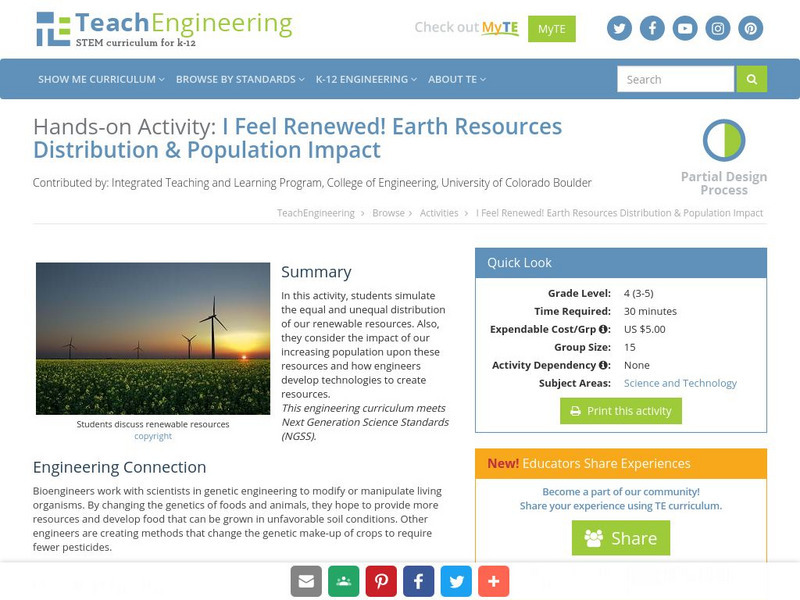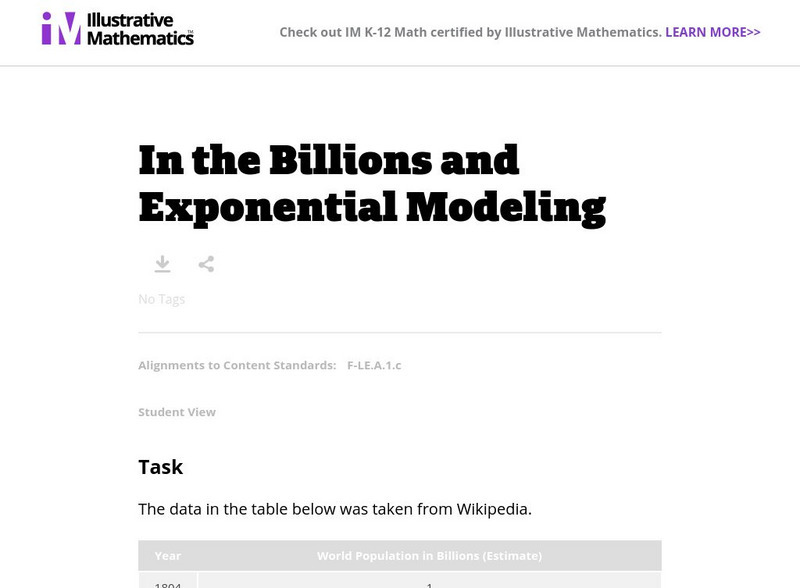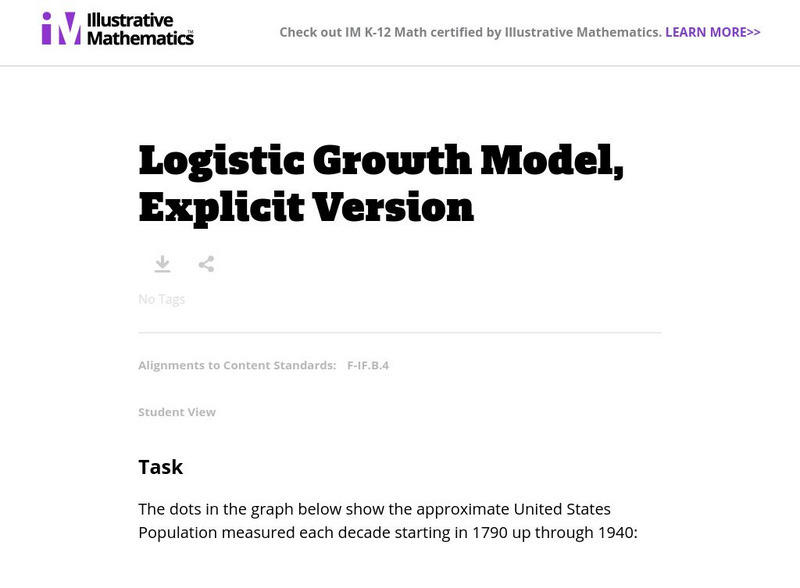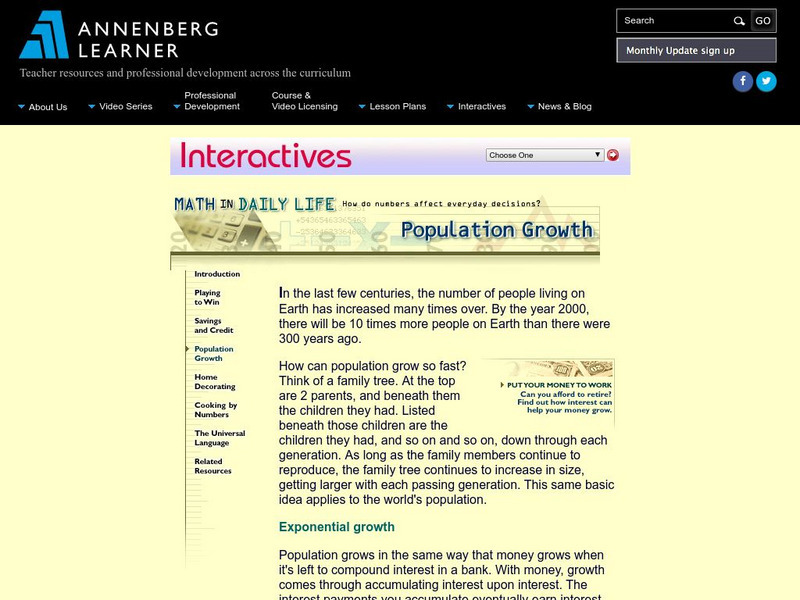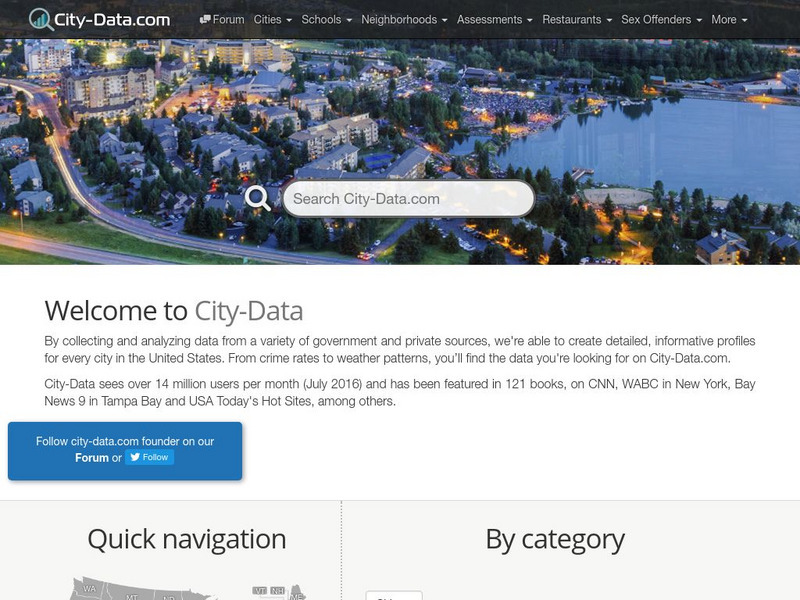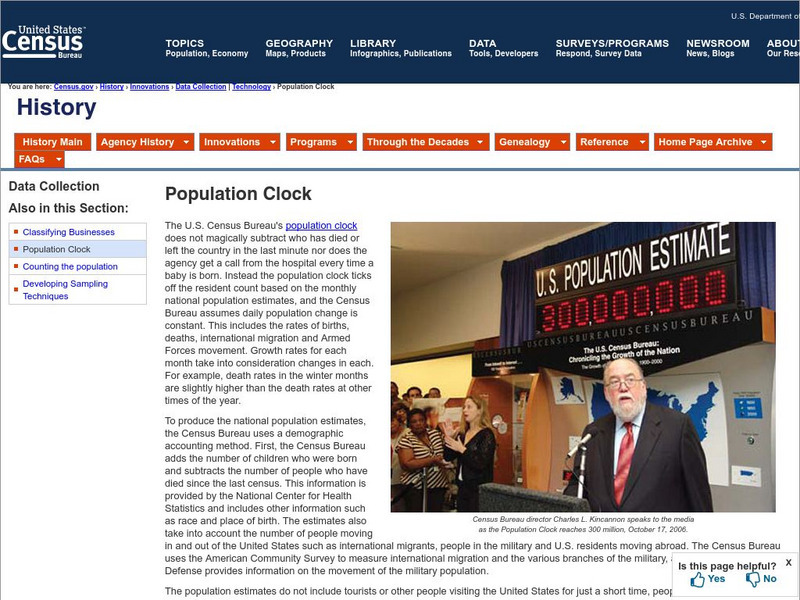National Humanities Center
National Humanities Center: Teacher Serve: Choosing Future Population
Essay on population growth past, present and future and the impact on society. Includes guiding questions for students and links to related resources.
US Census Bureau
U.s. Census Bureau: Population Change and Distribution [Pdf]
This U.S. Census Web site gives current and past information on population changes and distribution. Must have an Adobe Reader to access.
Other
Population for Countries and Cities Around the World
Site calculates and approximates populations for numerous major cities around the world, and also has information about world countries as well.
Center for Innovation in Engineering and Science Education, Stevens Institute of Technology
Ciese: Population Growth Project
In this collection of nine lessons, students use data from the U.S. Census to create population growth models and to examine the impact of changes in population factors such as age, demographic, etc.
Scholastic
Scholastic: Study Jams! Science: Ecosystems: Population Growth
Population in areas is most often determined by environmental factors. This video and the test will help ensure understanding of the trends of population growth with scientific evidence.
CK-12 Foundation
Ck 12: Biology: Demographic Transition
[Free Registration/Login may be required to access all resource tools.] Discusses the four stages of demographic transition.
TeachEngineering
Teach Engineering: I Feel Renewed!
In this activity, students will simulate the equal and unequal distribution of our renewable resources. Also, they will consider the impact of our increasing population upon these resources and how engineers develop technologies to...
Illustrative Mathematics
Illustrative Mathematics: F Le in the Billions and Exponential Modeling
For this task, students examine world population data from 1804 to 2012 and investigate whether an exponential function is appropriate for modeling the relationship between the world population and the year. Aligns with F-LE.A.1.c.
Illustrative Mathematics
Illustrative Mathematics: F if Logistic Growth Model, Explicit Version
For this task, young scholars are presented with a graph showing the growth of the U.S. population from 1790 to 1940 and are given the equation for a logistic function for it. They are asked to use the equation and the graph to find the...
CK-12 Foundation
Ck 12: Biology: Demographic Transition
[Free Registration/Login may be required to access all resource tools.] Discusses the four stages of demographic transition.
Khan Academy
Khan Academy: Activity: Population Growth
In this activity, you will study and analyze the nature and patterns of human population growth over the last 10,000 years. This will help you understand the differences between population growth before and after the Modern Revolution.
CK-12 Foundation
Ck 12: Biology: Human Population Study Guide
This comprehensive study guide covers the main terms and concepts needed for a unit on the growth of the human population.
Khan Academy
Khan Academy: Malthusian Population Growth and Population Pyramids
Read this passage and study the graphics to answer the five-question quiz that follows.
Annenberg Foundation
Annenberg Learner: Math in Daily Life: Population Growth
At this website there is basic information about world population growth over the last 300+ years. The link at the end of the article is to another article that compares the population growth of two states.
Other
City Data
A great source for finding stats and data about U.S. cities compiled from a variety of government and commercial sources. Profiles both large and small cities and includes maps, pictures, population, income and geographical data.
US Census Bureau
U.s. Census Bureau: Population Clocks
This U.S. Census Bureau Web site has two population clocks with notes available. One clock shows the population increase for the United States. The other shows the world population increase.



![U.s. Census Bureau: Population Change and Distribution [Pdf] Article U.s. Census Bureau: Population Change and Distribution [Pdf] Article](https://d15y2dacu3jp90.cloudfront.net/images/attachment_defaults/resource/large/FPO-knovation.png)
